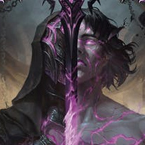Night has fallen, and Flesh and Blood is entering a new era of Shadow.
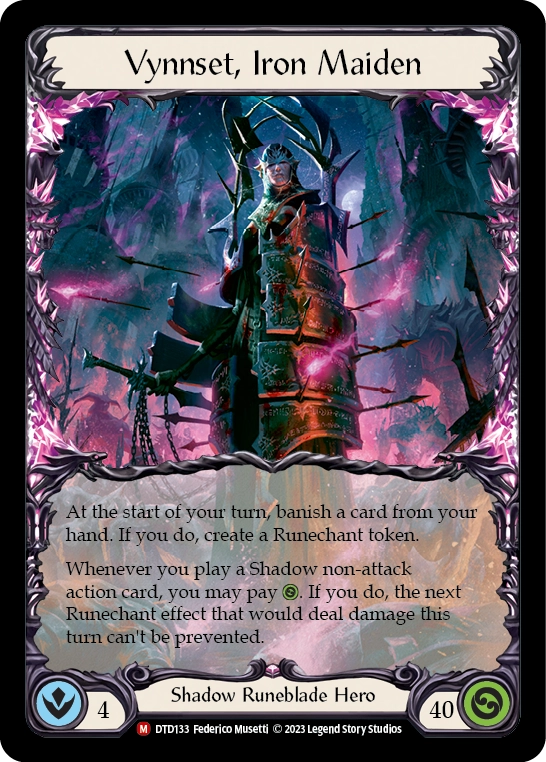
Vynnset, Iron Maiden, is taking on the mantle of Shadow Runeblade in Classic Constructed. Chane was a force to be reckoned with when he was legal, so there are certainly has some big shoes to fill. With Vynnset, we get to see the concept of "using life as a resource" taken quite literally with Vynnset's signature weapon, Flail of Agony.
We also see the return of Blood Debt as a mechanic, this time with much more emphasis on Runechant generation. Rune Gate is a new mechanic unique to Shadow Runeblade attack actions that allows them to be played from banish, provided you control Runechants greater than or equal to the cost of the attack.

It's important to note that if you don't have the required threshold of Runechants, you cannot play your Rune Gate cards from banish. Unlike Rune Flash and other Runechant discount cards, there is no partial discount here. You either discount the full cost of the card, or it will languish in your banish zone for the turn. This aspect of Rune Gate is a very real downside, but one that Runeblades are well equipped to handle.
Getting Comfortable in the Shadows
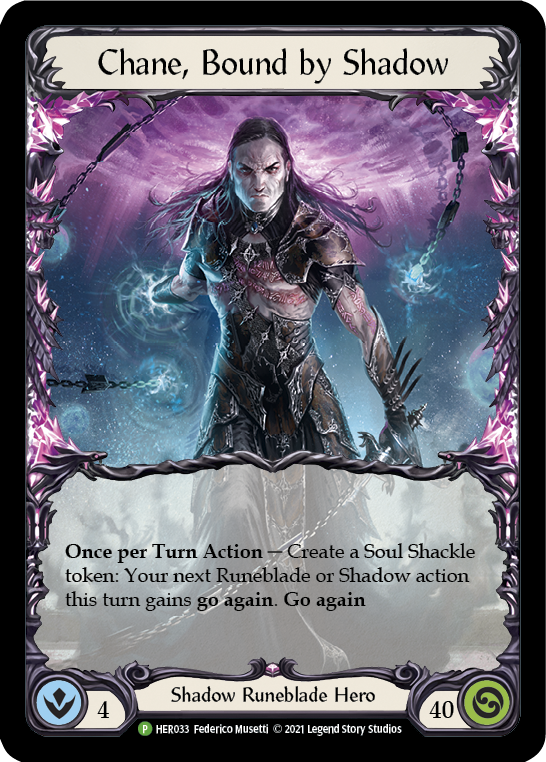
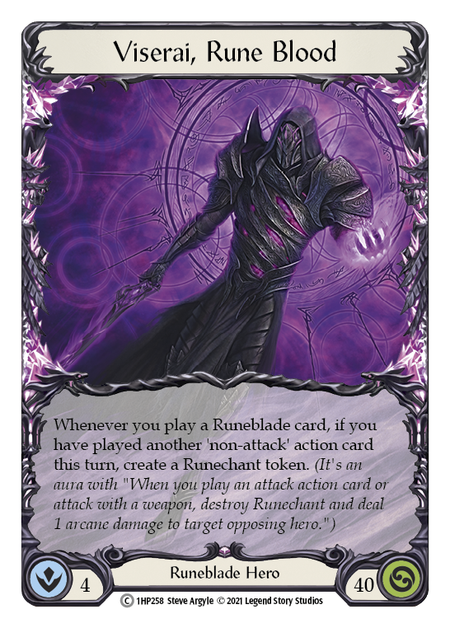
Vynnset is lacking the inherent tools and incentives to go wide that we've seen with Chane and Viserai, but what she does bring to the table is the ability to force through damage and really make her attacks hurt. Let's take a closer look at each of her abilities and see what we need to do to maximize each of them.
At the start of your turn, banish a card from your hand. If you do, create a Runechant token.
In theory, Vynnset's first ability can be all upside if we structure our deck correctly. If we're always banishing a card we can still play from banish, then this ability is just one free Runechant every turn. At worst, that Runechant is one extra point of damage; but it could also be worth an effective 2-4 resources, depending on the contents of our banish zone and how many Runechants we had before the turn started.
Making sure we can banish consistently isn't free though, so we need to pack our deck with enough Blood Debt to ensure we don't end up doing a Data Doll impression.
Assuming a 60-card deck, first cycle odds look like:
20 Blood Debt cards in deck = 81.3% chance to have at least 1 in a given hand
25 Blood Debt cards in deck = 89.3% chance to have at least 1 in a given hand
30 Blood Debt cards in deck = 94.4% chance to have at least 1 in a given hand
35 Blood Debt cards in deck = 97.4% chance to have at least 1 in a given hand
40 Blood Debt cards in deck = 99.0% chance to have at least 1 in a given hand
I have played enough D&D to know that a 5% failure rate is plenty high when you're rolling many times in a row, and you'll be making this gamble 15 times in the first cycle of your deck. For that reason, the absolute lowest number of Blood Debt cards I would run is Vynnset is 30, and in theory I'd like to end up in the 35-40 range. With such a high target for Blood Debt count, that means that any cards we run without Blood Debt really need to pull their weight to warrant inclusion.
Whenever you play a Shadow non-attack action card, you may pay 1 life. If you do, the next Runechant effect that would deal damage this turn can't be prevented.
The relevance of Vynnset's second ability will vary quite a bit depending the matchup, but forcing a Runechant through as unpreventable damage has some very strong uses.
Guaranteeing arcane damage. Rattle Bones, Meat and Greet, Consuming Volition, Rip Through Reality, and Piercing Shadow Vise all get a boost to their potency when we can guarantee that our arcane will connect. It also has the added benefit of making sure we get at least two activations out of Spellbound Creepers before our opponent has the opportunity to prevent an adequate amount of arcane damage to make sure they're destroyed.
Ability to end games. Rosetta Thorn is not long for the Classic Constructed format, which means that the best Runeblade tool for closing out games is about to be gone. Similar to how you never want to go to one life against a Warrior for fear of Steelblade Shunt, going to one against Vynnset will often be a death sentence if you can't gain life or put Vynnset to one immediately.
Destroying a wardstate. Prism, Awakener of Sol would love nothing more than to flood a board with Angel after Angel, but that is a foolish game plan against the Iron Maiden. Utilizing her second ability means that a single Runechant will shotgun every Angel, Spectral Shield, and any Wards our opponent controls.
Whether this ability is worth the life you pay for it will be situational, but ignoring other factors like Wards and cards that care about arcane, you'll more likely want to pay against defensive decks and not pay against more aggressive opponents. Keep in mind that there is a finite number of times you can employ this effect in a game (equal to the number of Shadow non-attack actions you can play), so you'll want to make sure you're pitching to facilitate this ability in the second cycle where it can be game deciding. If you think this ability will be important for closing out a game, make sure you're careful with your life total, otherwise it won't be an option for you when you need it.
Navigating the Rune Gates
Now that we've established the terms of engagement for deckbuilding with Vynnset, we come to the payoffs for all the forced banishing and self-flagellation: playing our attack actions without paying any resources.
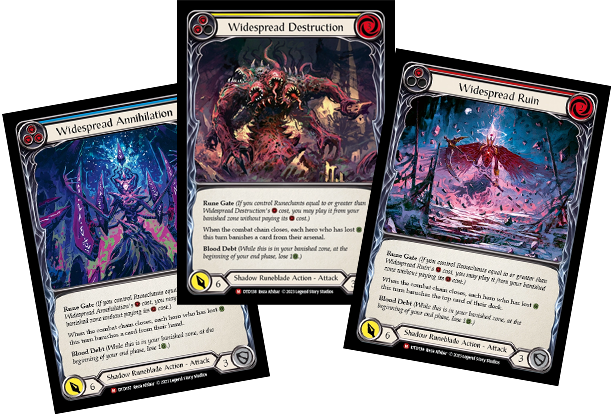
The Widespread majestic cycle is an extremely powerful trio of cards that introduces us to a new type of effect in Flesh and Blood, symmetrically checking if each hero has lost life when the combat chain closes, which I've taken to referring to as on-pain (as opposed to the usual on-hit). Annihilation and Destruction have the best on-pain effects in my mind, as they allow us to attack the opponent's hand and arsenal, sometimes without leaving them much recourse if we're able to make a Runechant unpreventable to guarantee they take damage this turn. Ruin's on-pain effect is close to reading like "draw half a card" since our deck will be at least 50% Blood Debt cards, but there is also downside to banishing a card you can't play this turn, which is why this is the Widespread card least likely to become a staple.

Deathly Wail is a solid payoff card while simultaneously being our best Rune Gate enabler. I feel strongly enough about Wail being a staple that all my initial Vynnset decks have the full 9 copies of this card. The really cool part about Deathly Wail's on-pain effect is that it allows us to swing Flail of Agony afterwards without costing us the Runechants that Wail will eventually create. This means that, if your opponent isn't willing to expend resources to defend Flail, there is a very high chance that you end your turn with three Runechants, which is where we want to end as many turns as possible.
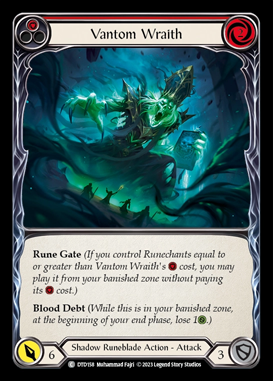
(The existence of Vantom Wraith and Vantom Banshee imply the existence of another cycle of Rune Gate cards called "Vantom Phantom", which I sincerely hope LSS decides to make a real card some day for the rhyme.)
These are our baseline vanilla Rune Gate cards that will probably fill out some of our deck depending on our pitch needs, and which cycle sees more play will be dependent on how easy it is to turn on Rune Gate for a 2 vs 3-cost in the late stages of the game.

Deathly Delight has the potential to be an incredibly important card for Vynnset, as it is the first life gain effect we've seen on a Runeblade attack action card. It is possible that the life gain on this card ends up being a superfluous effect and we just want other options with more damage, but if you were already going to pay a life on your turn either to force through a Runechant or swing Flail, then Deathly Delight is a 2 for 7 at red which is a fine place to be. Rift Skitter is a pseudo–Rune Flash for us, and it could see play at red if we're really hungry for chain extenders, but it will require testing to determine if it's worth it or if we're better off saving our Runechants for our juicier attacks.
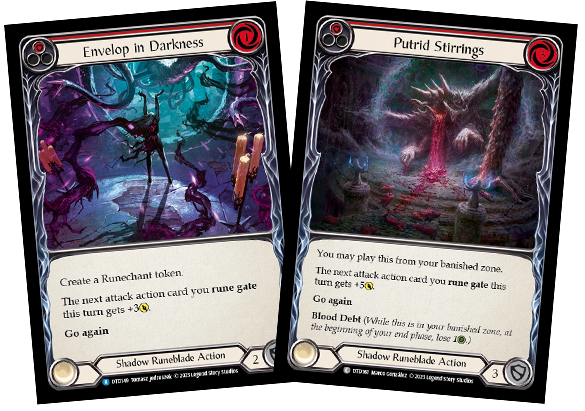
While the suite of Rune Gate attacks is awesome, Putrid Stirrings and Envelop in Darkness are two of the most important cards in the set. Putrid Stirrings is akin to a 3-block Sloggism for our Rune Gate cards that we can actually just play from banish which is awesome. Envelop's Runechant creation will help us hit Runechant thresholds when we're short on being able to play a Rune Gate and it comes at a nice damage rate at that. These actions will likely comprise a large portion of the Shadow NAA suite for turning on Vynnset's second ability.

We can't talk about Rune Gate without looking at our other new synergy enablers in Funeral Moon and Requiem for the Damned. Each of these cards has a relatively minor effect, but as 3-blocks with the flexibility to be played from banish and at instant speed (even potentially on your opponent's turn if they hit you), they're the kind of cards that grease the wheels and make everything else in the deck run more smoothly. Runic Reckoning is a coin toss to make the final list, but the floor of a 3-block Nimblism is a great start.

Last but not least, we come to Vynnset's own personal demon, Nasreth, the Soul Harrower. In our deck that will be focused on consistently spitting out Runechants, Oblivion should be very playable. Being a blue makes it an alright card to have as a no block in our deck. While its requirement of exactly 6 Runechants seems like a tough needle to thread, fear not, because if you have more than 6 you can simply attack, trigger your Runechants, and then when enough have been destroyed to leave you with exactly 6 remaining, you can play Oblivion in that window since it is an Instant. At worst, Nasreth is a threat that our opponents will need to address, meaning effectively gaining us life while they deal with her. At best, Nasreth is a 0-cost 6-power attack that can gain us even more effective life by allowing us to block with our entire next hand if they choose to (or are forced to) ignore it. Without inherent access to extra action points, Nasreth probably won't be the same type of late game finisher as her demonic predecessors, Ursur and Blasmophet; but if used properly, this new demon can be a fantastic value play.

The Iron Armory
Discussion of possible weapons is where things get very interesting. Flail of Agony costing life instead of resources to activate allows us to look at our curve in a different way from previous Runeblades. When our follow-up attack doesn't require resources, suddenly those awkward turns where we have to pay full price for an attack action from hand feels a little less bad.

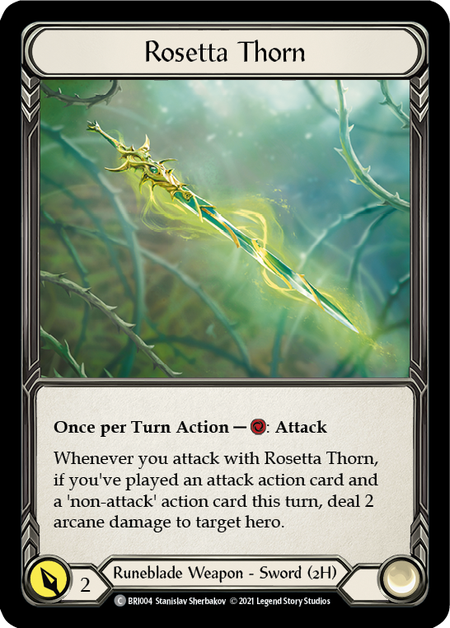
Rosetta Thorn remains its usual powerful self, but it fits less cleanly into Vynnset's natural cost curve. Nebula Blade is a consideration for the ability to threaten as much total damage as Rosetta Thorn while retaining the threat of generating a Runechant for our next turn. Each of these weapons also score bonus points for helping us keep the board clear of dragons while providing other value in their own ways.
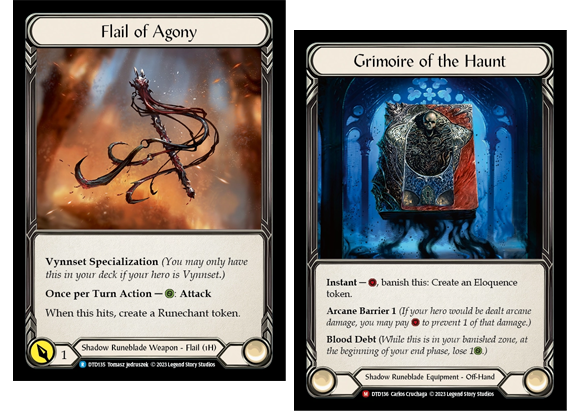
If Flail was a two-handed weapon it would have a harder time competing with Rosetta; but there is some serious power to being able to run Grimoire of the Haunt. Mage Master Boots are a legitimate equipment that has seen constructed play at the highest levels, and it was a frequent sight in Viserai decks prior to the advent of Spellbound Creepers. And we get the option to run the shadowy offspring of Mage Master Boots and Arcane Lantern as our off-hand! Giving go again to a red Read the Runes once per game can be a game-defining play, and I suspect that it will prove a powerful enough tool to make Flail the correct default choice of weapon for Vynnset.

While not actually an off-hand, Scepter of Pain is also an option for our other hand as a secondary weapon to use in the late game when we don't have life to spare for Flail. It's certainly worse than Flail in general, as two resources is infinitely more than zero, but there could be late game scenarios where you'll be glad to have the flexibility. Reaping Blade is also worth mentioning here; if opponents ever decide that hard fatigue featuring ample quantities of life gain is the correct plan against Vynnset, Reaping Blade can ensure that our opponent’s life total walks down with our own.
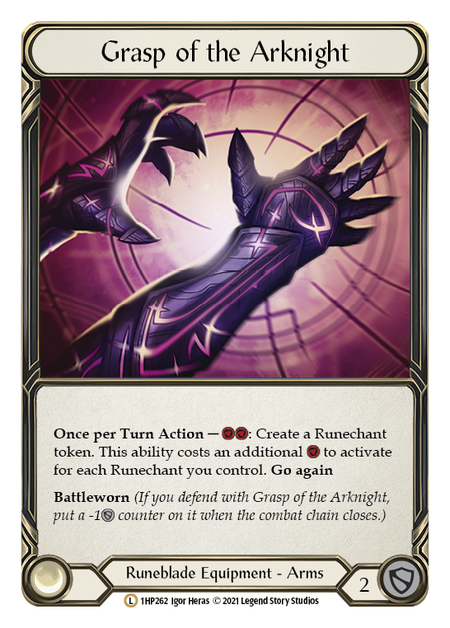
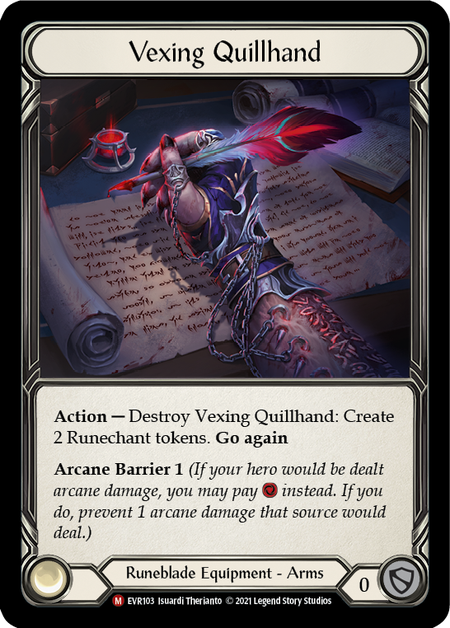
Old faithful, Grasp of the Arknight is my default choice for CC due to the armor block. Not only that, but if you have a 2-cost Rune Gate card in banish with only one Runechant in play, you can pitch a blue to activate Grasp to create a second Runechant and fire off your attack, effectively refunding your investment.
Even though Grasp remains an excellent baseline and safety valve for our deck, it's possible that we will want Vexing Quillhand more in Blitz and even in certain CC matchups. With Rune Gate cards, Vexing Quillhand bears a striking resemblance to Heartened Cross Strap, which is a powerful statement for an arm equipment that also just gives us two damage via Runechants. This interaction is powerful enough that I would not be surprised to see Vexing Quillhand on the Blitz Banned and Suspended list at some point.
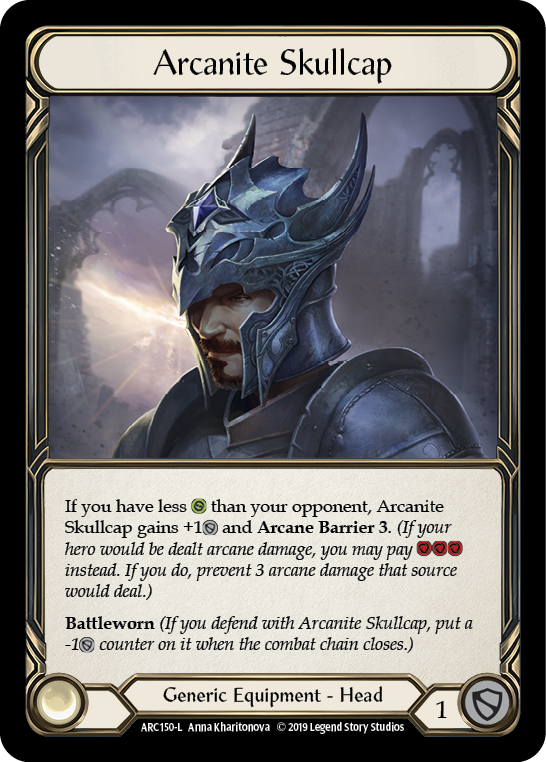
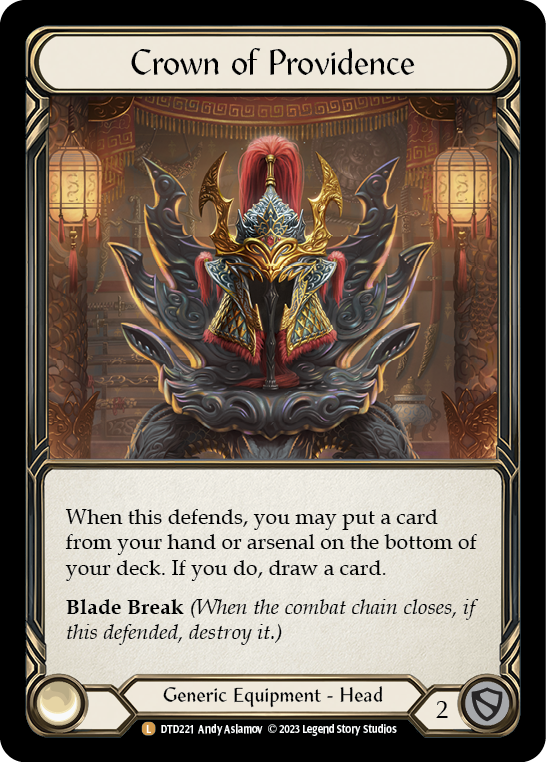
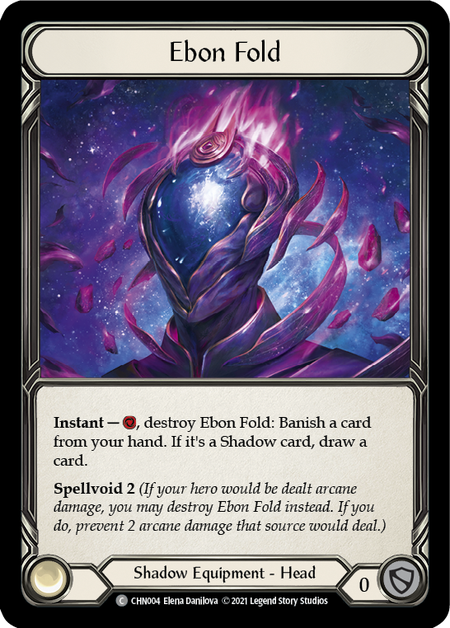
Crown of Providence is the de-facto head equipment for classes that don't have access to stronger options, and Runeblades still fall into that category. The ability to negate the first Command and Conquer's on-hit effect remains powerful, as does the ability to help fix a clunky hand. There is a world where Arcanite Skullcap is better since we're damaging ourselves often enough that it should be easy to get the third point of defense out of it, but I'm guessing Crown of Providence will feel more impactful.
Ebon Fold is a great option to have against Wizards, and the access to an extra onboard source of banishing could be very strong if used in a manner similar to Halo of Illumination for our Light counterparts. Crown of Dichotomy remains the best Arcane Barrier 1 head option, but with the printing of Dyadic Carapace, Runeblades will be looking elsewhere for their AB3 from now on.
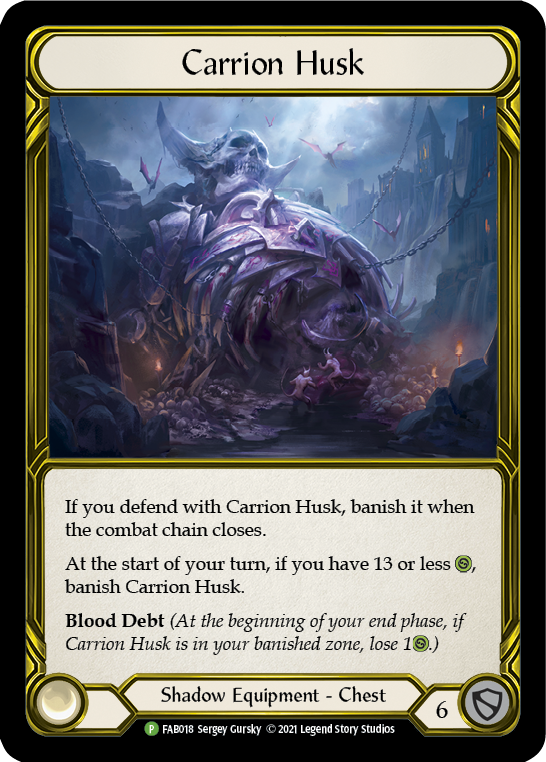
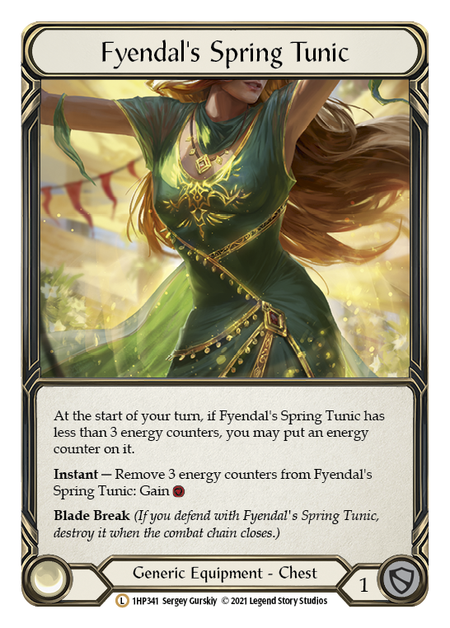
Talk about being spoiled for choice! Carrion Husk remains as incredible as ever, and I can't wait to play with it again in CC. It is a defining card against aggressive decks as well as decks trying to connect devastating on-hit effects like Guardian and Ranger. The first time Bravo tries to send a dominated Star Struck at you, you'll wonder how you ever played a Runeblade without it.
Dyadic Carapace is a little unassuming at first glance, but it joins some elite company, as every equipment in the game that has both Arcane Barrier and the ability to block is a Legendary-rarity card. Cleanly fitting Arcane Barrier 3 into our equipment suite while also not being completely vulnerable to a Nourishing Emptiness out of Wizard decks is great and feels right for the class that specializes in split damage. Fyendal's Spring Tunic is also worth mentioning as an option if we ever encounter another Fatigue Oldhim-style deck in the meta and need to play for a longer game while minimizing our Blood Debt accrual.
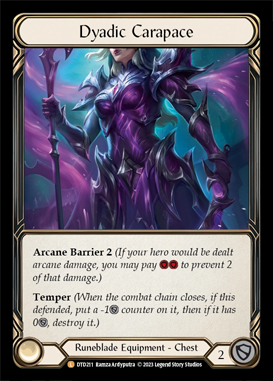
For legs, there isn't even a conversation to be had. Spellbound Creepers, end of story. Vynnset's ability to force through the damage from a Runechant means you'll be more likely to keep Creepers around for multiple activations, Spellbound Creepers can be good in any Runeblade, but I think they are at their best out of Shadow Runeblades who can save up extra cards to unload out of banish for huge explosive turns. While I think Creepers are at their best in Chane, I think their use will prove to be most vital to Vynnset's success in CC or Blitz.
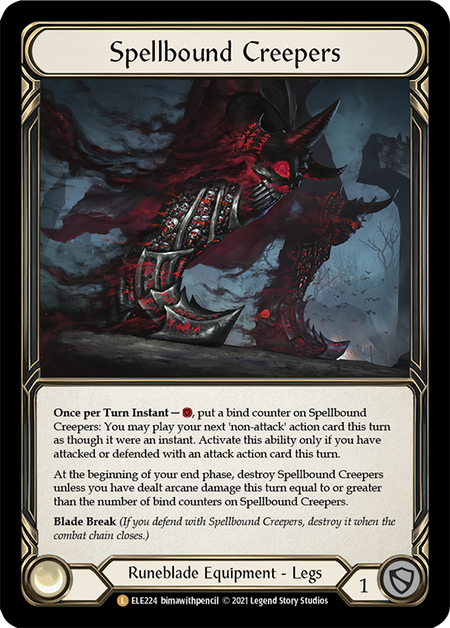
Scouring the Archives
When evaluating the existing card pool prior to Dusk till Dawn, there were a few key attributes that I searched for: Runechant creation, Go Again, Banishing, Blood Debt, Shadow non-attacks, and cards that got stronger if we could guarantee arcane damage would be connecting.
Runechant Production

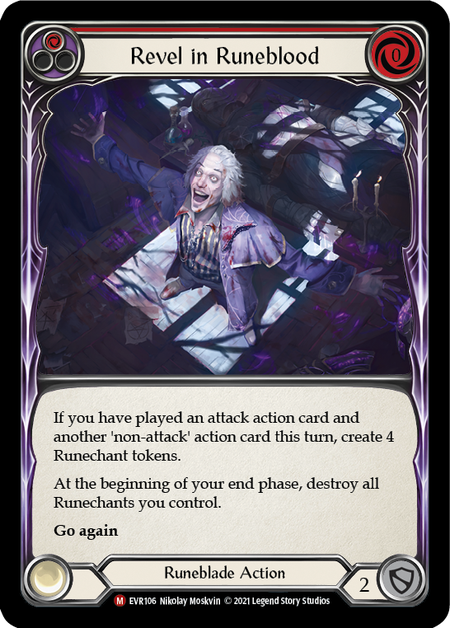
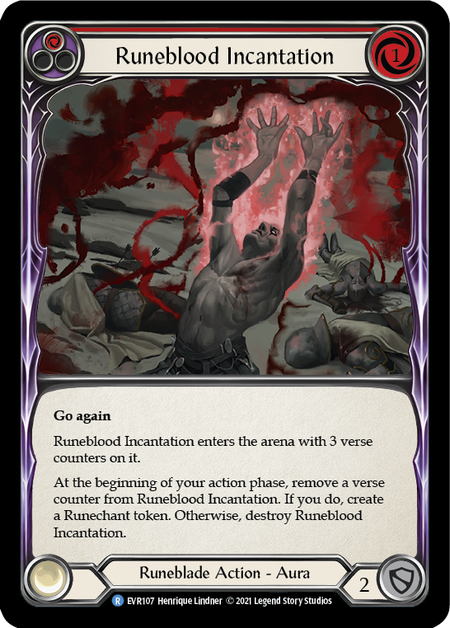
Read the Runes, Runeblood Incantation, and Revel in Runeblood seem like easy picks to prove themselves Vynnset staples. They're efficient and help her jump through the hoops she needs to jump through to maximize her Rune Gates. Read the Runes in conjunction with Grimoire of the Haunt is an extremely strong play that I expect to see frequently.
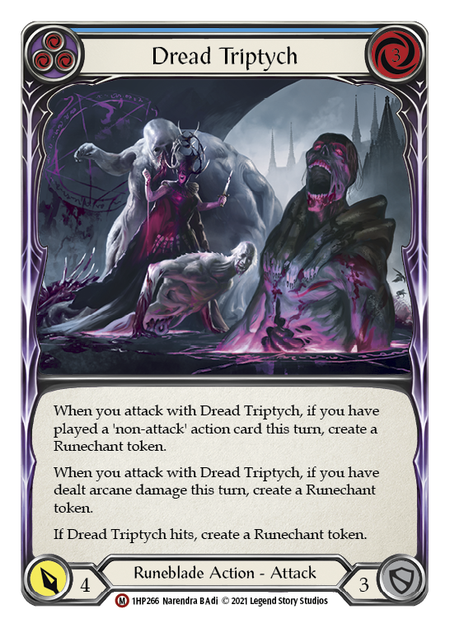
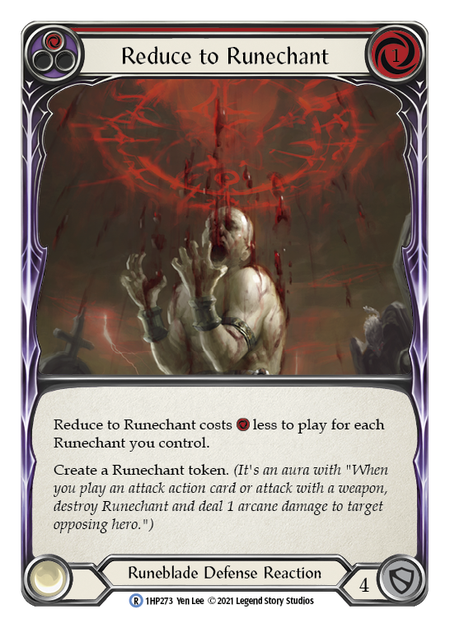

An old favorite of mine, Dread Triptych is the only non-talented Runeblade attack action with the capability of leaving you with 3 Runechants all on its own. Spellblade Assault is less expensive and more consistent, and ending with 2 Runechants is the perfect count for every Rune Gate card aside from Widespread Annihilation. Reduce to Runechant is a cool role player here as she lets us get our Runechant count up while playing more efficient defense. Blocking for 10 with 3 cards and coming back at your opponent for 10 off of a single Rune Gate is a high value turn cycle. Deathly Duet and Spellblade Strike also came up in this search, but I don't think they work as well as the aforementioned options.
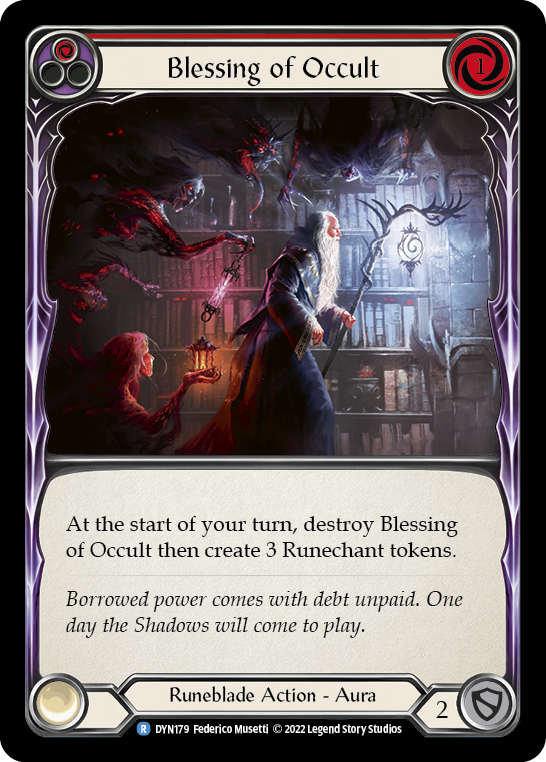

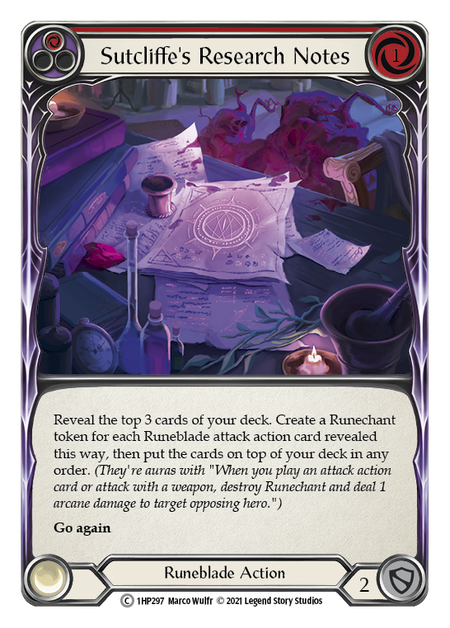
If there has ever been a Runeblade deck where a fun-of Bloodspill Invocation was correct to run, it has to be this one. Using Creepers for a surprise three Runechants and an action point to throw another Rune Gate is big game. Sutcliffe's Research Notes should work pretty well for our deck that should be more attacks than not, and has the added bonus of being the type of card that could make Tome of the Arknight actually a potent card. Blessing of Occult is fine, but it costing a resource and not giving the payoff until the next turn makes me think I would want Yellow Read the Runes before any number of Blessings.
Shadow Non-Attack Actions
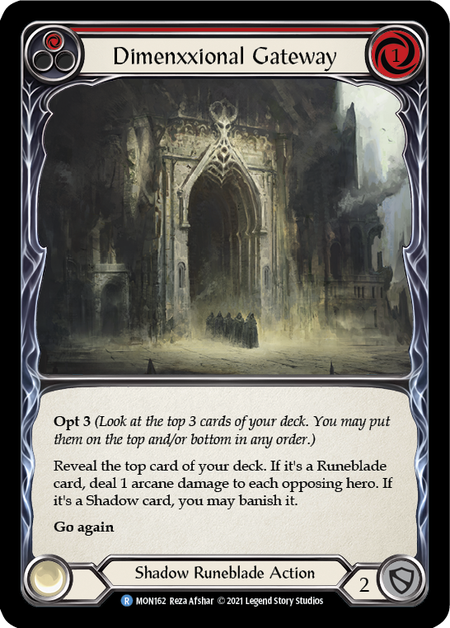
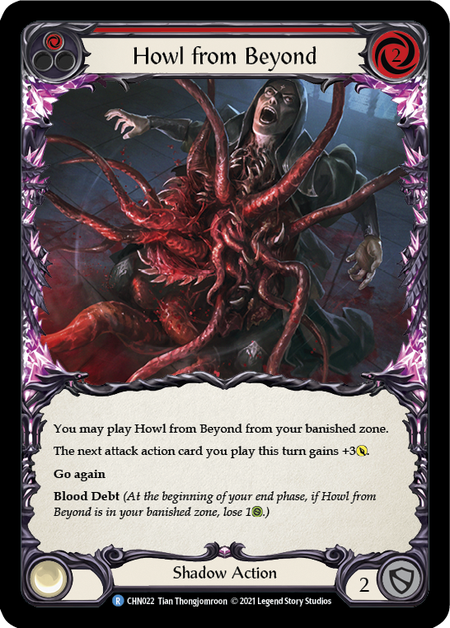
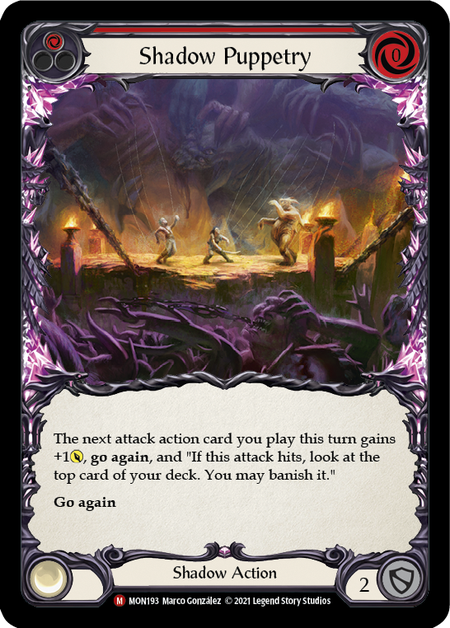
Shadow Puppetry is the one windmill slam inclusion from existing options. Dimenxxional Gateway is super thematic with Vynnset, but unfortunately its generating a ping of arcane damage instead of a Runechant is going to keep it on the sideline. If we really end up scraping to fill slots that need to be Shadow NAA's and help keep our Blood Debt count high, Red Howl from Beyond is the next closest thing we have to an on-rate option. Most of the other existing Shadow NAA's are too below rate to really even consider, including the once suspended Seeds of Agony and CC role player Seeping Shadows. Without Chane's innate card advantage, Vynnset can't take the same "sock full of batteries" approach. We need to get more value out of individual Blood Debt cards than he did.
Go Again/Extra Banishing
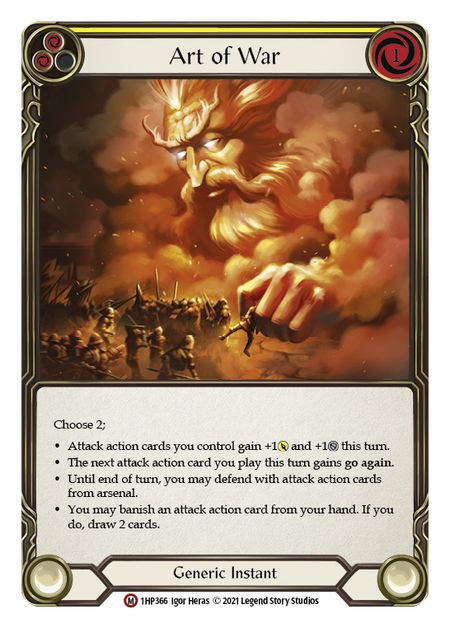
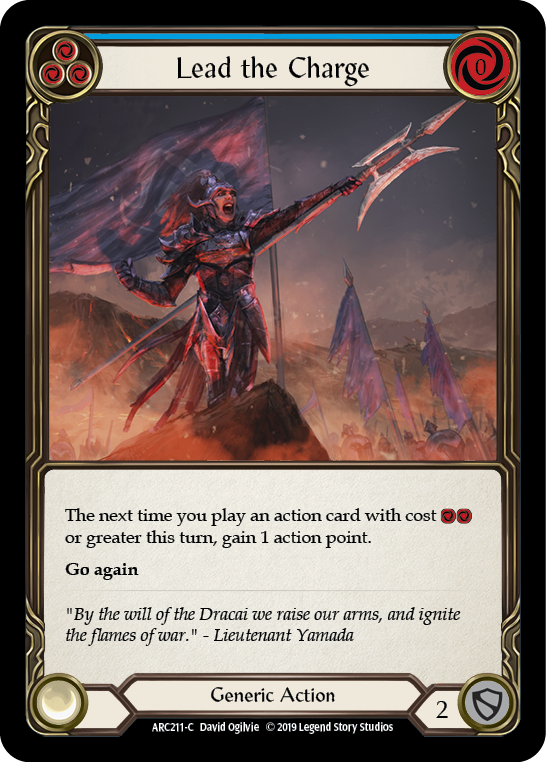

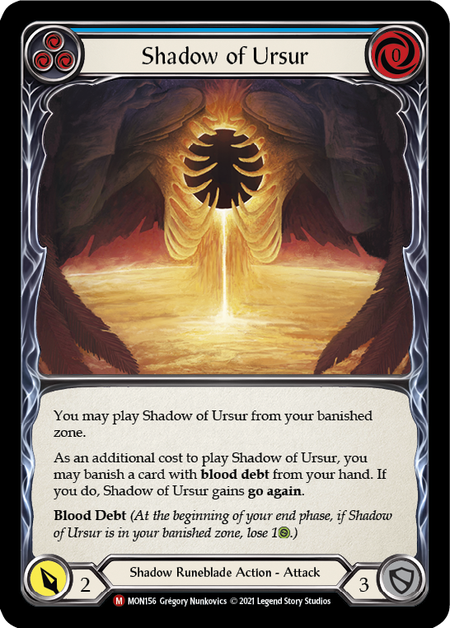
Most of these will look familiar if you've played Chane or Viserai. Extra action points, Runechants, and banishes are the name of the game here. Captain's Call not being able to hit bigger attacks rules it out, and similarly we don't go wide enough for Looking for a Scrap to be a real contender for deck space.
Guaranteed Arcane Damage
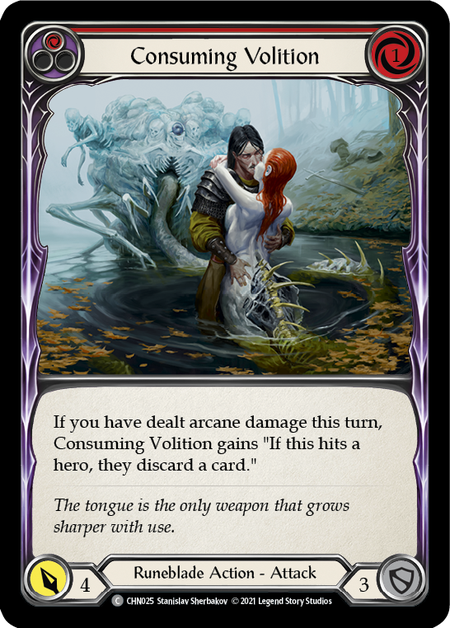
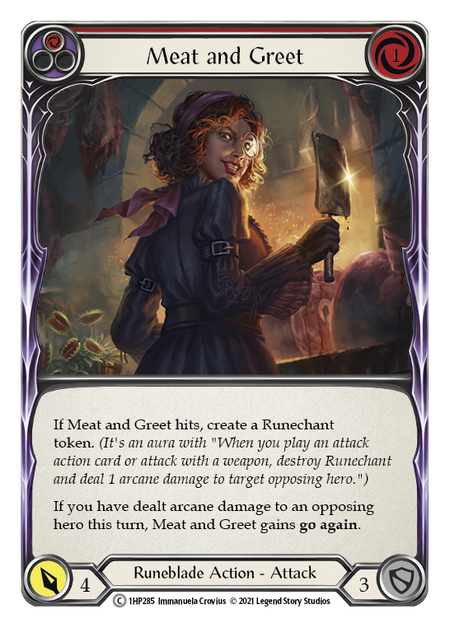
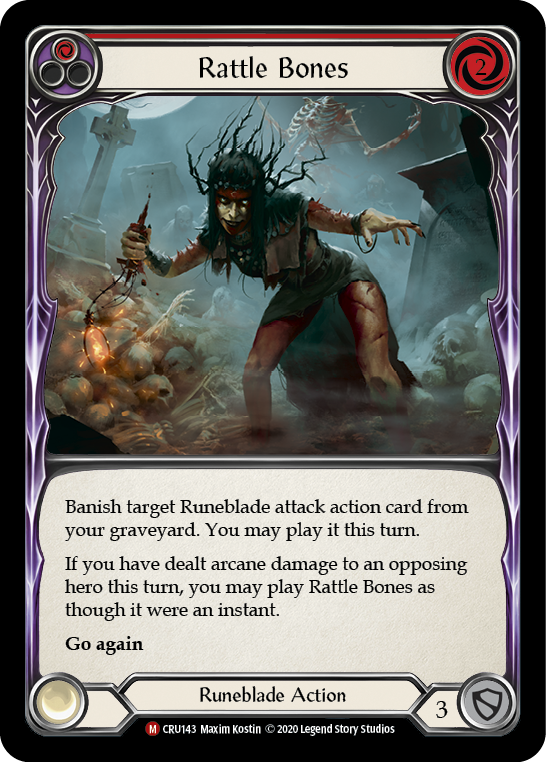
The biggest gripe with Meat and Greet and Consuming Volition in Viserai was always that you're frequently giving your opponent a choice of how to block the effect, giving them more agency over your turn than you really want to. Vynnset's second ability means that more often, there will not be a choice. Opponents will take their point of arcane damage and deal with the consequences. That said, it remains to be seen if these on-hits fit well with the rest of our strategy.
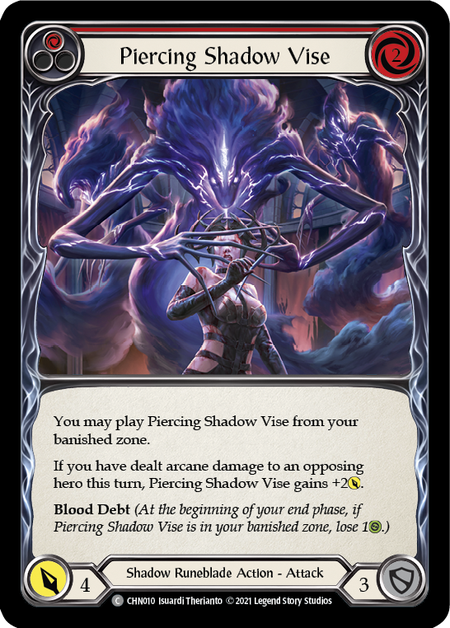
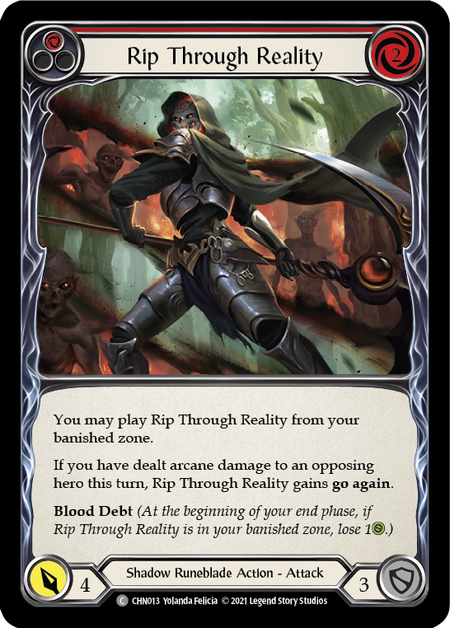
I'm actually more interested in these potential options as they let us double up as payoffs for guaranteed arcane as well as keeping our Blood Debt density high.
Blood Debt Attacks
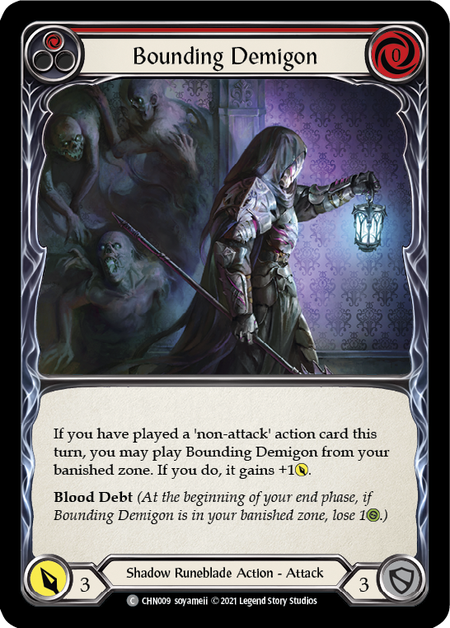
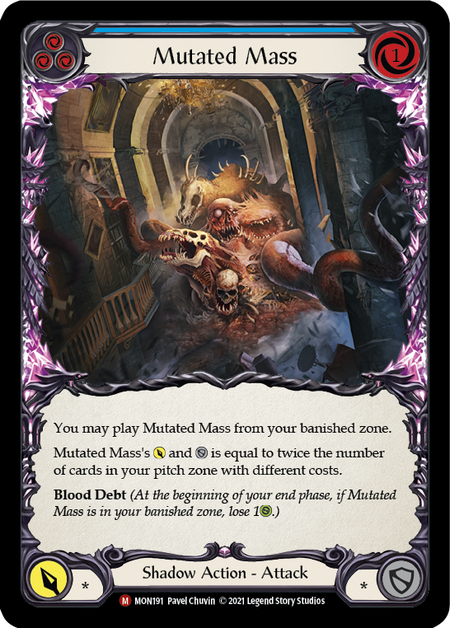
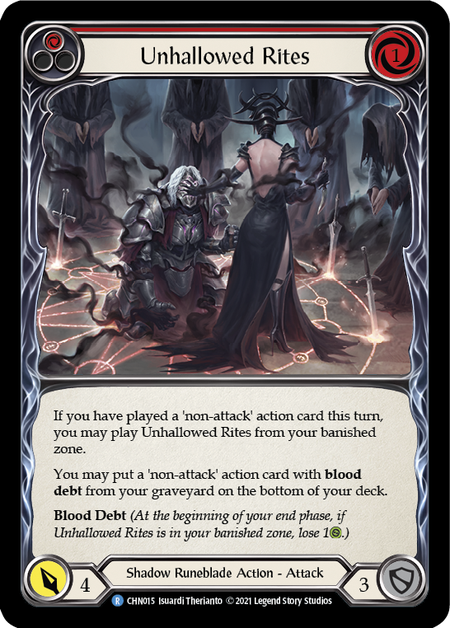
Our other attack options for keeping Blood Debt density high. Shadow of Ursur, Piercing Shadow Vise, and Rip Through Reality have already been mentioned for their other merits, but Unhallowed Rites and Bounding Demigon are the two others I am potentially interested in. Rites can put copies of Putrid Stirrings or Howl from Beyond back into your deck, keeping your Shadow NAA count higher for closing out the late game. Bounding Demigon is just good as a 4-power attack that costs nothing (though its lack of synergy with the rest of our deck might keep it from being included).
We're probably not pitching enough cards in a turn to make Mutated Mass worth playing another no block, but it's possible that it could end up being a high enough value blue since it wears a lot of hats. Void Wraith, Ghostly Visit, Rift Bind, and Rifted Torment all likely fall too short of the mark to entertain inclusion.
Other Considerations

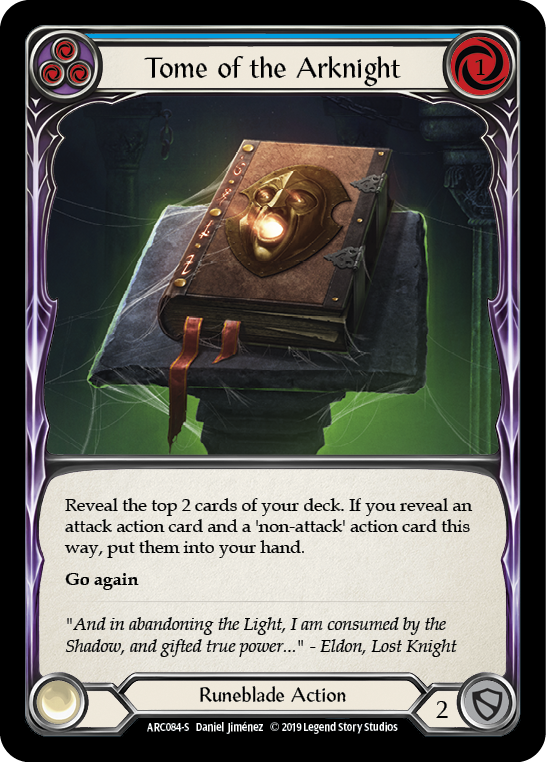
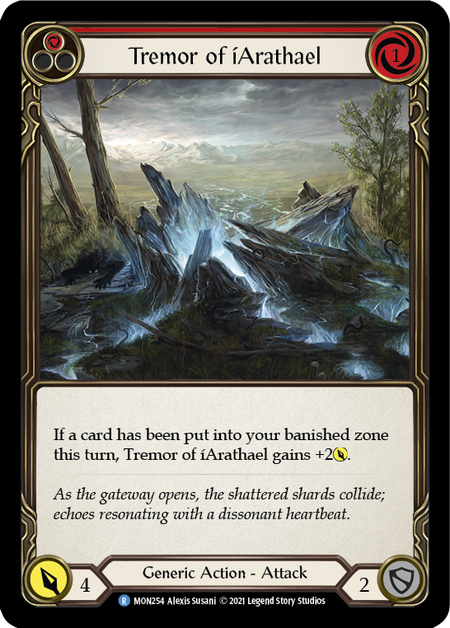
A 1-cost attack for 6 is just good value, and Tome of the Arknight has potential synergy with Sutcliffe's Research Notes and Dimenxxional Gateway if we choose to play those cards. Similarly, Tome of Fyendal has great potential alongside Spellbound Creepers, Grimoire of the Haunt, and Requiem for the Damned.
The Deck
Here is where I landed with initial deck lists for CC and Blitz. Both of them are leaning into the synergy of the new cards, as I want to see how far I can push the Rune Gate mechanic.
In Classic Constructed, we’re trying to play a good value game while setting up for some more explosive turns via Revel in Runeblood or Nasreth. These explosive turns will be accompanied by some setup turns where we block heavily, banish a card for next turn, make some Runechants, and pass.
In Blitz, we’re going all out aggression off the back of the power of Vexing Quillhand and Carrion Husk. Get your opponent on the backfoot quickly, then punch through with your larger attacks and close out the game with some unpreventable arcane.
General Strategies
In keeping with Runeblade tradition, Vynnset doesn't mind going first. Her built in banish allows her to effectively arsenal a second card (at the paltry cost of one life). That extra card, combined with a free window to activate Grasp of the Arknight to have 3 Runechants available on our next turn, might be enough to offset the usual tempo disadvantage of going first.
Runechant economy is going to be key. Paying zero resources for our Rune Gate attacks is a very strong ability, but we're going to have to work to keep the gate open consistently.
Due to Vynnset's second ability (and Flail if you choose that for your weapon), she will thrive playing with a life lead as the inevitable damage will start to weigh on our opponent's decision making. Similarly, it can be tough to play from behind in the late game as our abilities and potentially weapon will cost us life.
Vynnset seems like the puzzliest Runeblade puzzle to date, and I am incredibly excited to figure out what she can do. We’re just scratching the surface of her deckbuilding possibilities. For instance, we didn’t even talk about a hard defensive/OTK style deck in this article, playing a bunch of defense reactions while building a massive pile of Runechants and just popping off entirely on a single turn or two. There will be much more exploring to do and I can’t wait to dive in. There is a VERY high chance I will be repping Vynnset, Iron Maiden at Battle Hardened Cincinnati, and if you want to see some Vynnset game play between now and then, feel free to stop by and check out my new YouTube channel, Arknight’s Shadow! I’m planning to stream once or twice a week as my schedule allows, but videos of the stream will be available even if you can’t catch it live.
Happy Runechanting, and long live the Demonastary!


